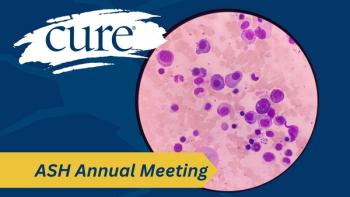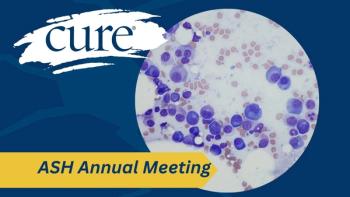
Ensartinib Improves Progression-Free Survival in Patients with ALK-Positive NSCLC
The novel next-generation ALK tyrosine kinase inhibitor improved survival, compared with Xalkori, in patients with ALK-positive non-small cell lung cancer, potentially representing a new option in the first-line setting.
Treatment with ensartinib induced longer progression-free survival, compared with Xalkori (crizotinib) in patients with anaplastic lymphoma kinase (ALK)-positive
Dr. Leora Horn, Ingram Associate Professor of Cancer Research in the Division of Hematology/Oncology and director of the Thoracic Oncology Program at Vanderbilt-Ingram Cancer Center in Nashville noted that the novel next-generation ALK tyrosine kinase inhibitor (TKI) represents a new option in the first-line setting for these patients.
The researchers randomized 290 patients – which comprised the prespecified intent to treat (ITT) population with locally determined ALK-positive NSCLC – to evaluate the efficacy and safety of ensartinib, compared with Xalkori, which is approved for the treatment of some subtypes of patients with NSCLC, including ALK-positive patients. The modified (mITT) population – which comprised the prespecified patient population that was ALK-positive as confirmed by central Abbott FISH test – included 247 patients (121 patients in the ensartinib arm and 126 patients in the Xalkori arm).
Median age of the study participants was 54.1 years. Overall, 26% of patients received chemotherapy prior to the study and 36% of patients had brain metastases as baseline, which included 5% of those patients having prior brain radiotherapy.
As of the July 1, 2020 data cutoff, treatment was ongoing in 64 patients (45%) being treated with ensartinib and 25 (17%) of those in the Xalkori arm.Median follow-up was 23.8 and 20.2 months, respectively, in the ensartinib and Xalkori arms.
In total, 139 patients experienced disease progression or death, including 73% in the ITT population and 63% in the mITT population.
Median progression-free survival – or the time from treatment to disease worsening – was 25.8 months in the ensartinib arm, compared with 12.7 months with Xalkori, leading to a 48% reduction in the risk for disease progression following treatment. Horn noted this analysis showed a statistically significant difference in progression-free survival between the two groups.
In the mITT population, median progression-free survival has not been reached yet for those receiving ensartinib, compared with 12.7 months for the Xalkori arm – resulting in a 52% reduced risk for disease progression.
The overall response rates – or the proportion of patients who have a partial or complete response to therapy – were 75% and 67%, respectively, in the ensartinib and Xalkori arms. In particular, among patients with measurable brain metastases, the intracranial overall response rate was 64% with ensartinib, compared with 21% with Xalkori. Moreover, time-to-treatment-failure rate in patients with no baseline brain metastases was also significantly lower with ensartinib at 12 months, compared with Xalkori (4% versus 24%).





